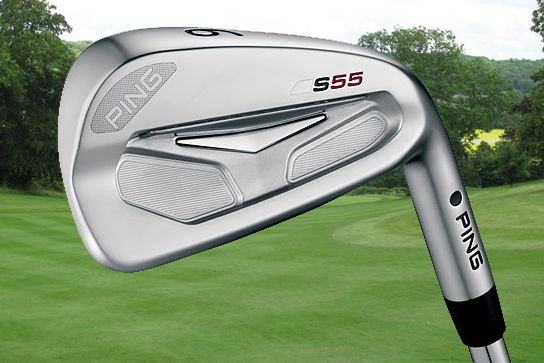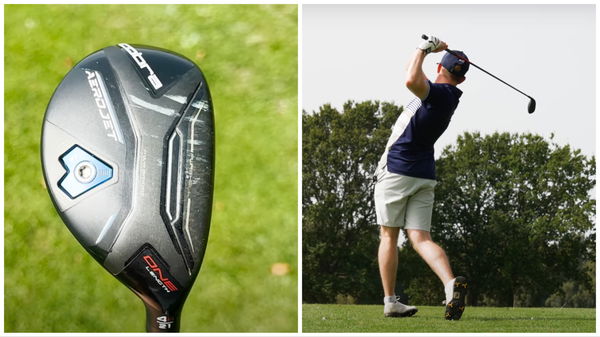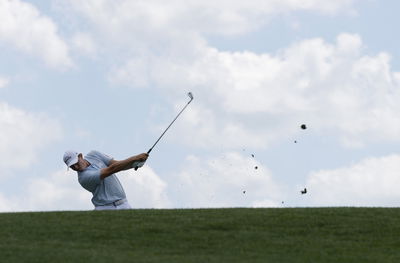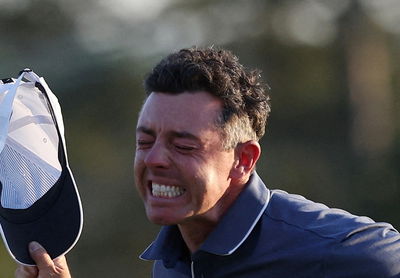Review: TaylorMade SLDR fairway wood
Is the SLDR 3-wood an improvement on the RocketBallz Stage 2. We find out...
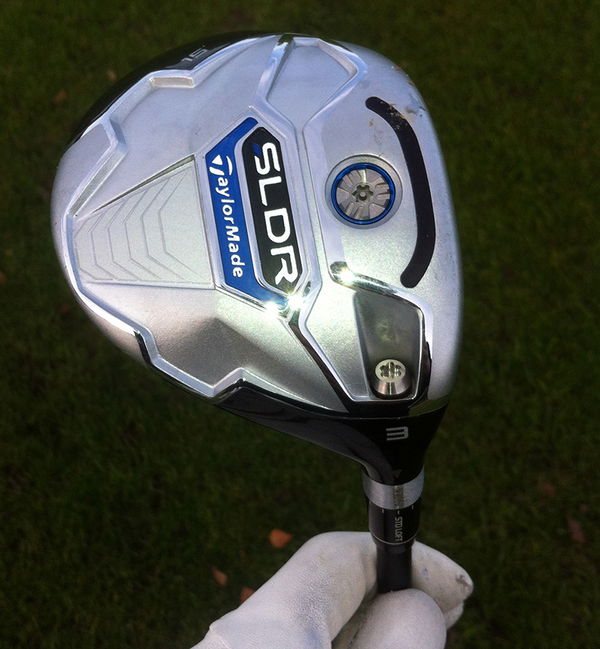
Love them or hate them, no one can deny that TaylorMade has a way when it comes to the color schemes that they use within each line that they release. The SLDR line is no different with its metallic charcoal crown, brushed sole, and blue accents. The result is possibly the best looking fairway wood that TaylorMade has released in years. Even with the small graphic at the rear of the crown it is a clean look, with nothing unnecessary and no bright white finish – it’s just a look that says this one has come to work.
The first change worth mentioning is the smaller overall size of the head. The SLDR 3-wood comes in at 155cc, whereas the last non-TP fairway that TM released was 175cc. It is a sizeable difference for sure. The benefit to this is that the profile of the SLDR looks more like a fairway wood and less like a miniature driver, a definite improvement by many people’s standards. Additionally, the Speed-Pocket is much different than we have become accustomed to as it is smaller and a slightly different shape. Put all of this together and the SLDR fairway wood is an impressive package.
The most recent push from TaylorMade with the introduction of the SLDR driver is that of a more forward and lower CG, which is intended to promote lower spin and faster ball speeds. That same ideology/technology has been applied to the SLDR fairway and hybrid lines as well. Because of the CG movement creating much lower spin, the actual effective loft of the club has become more important as far as achieving optimal launch conditions. The low-spin/loft situation is exactly why TM included their Loft Sleeve technology in the standard version this year and not just the “Tour” version as they did in the past.
By now most golfers know about the purpose of the Speed-Pocket and its role in impacting face flexion and ball speed. As years go by it is now clear that this is a technology in which TaylorMade has bought all the way into across their lines, but rather than settling with it, they are continuing to evolve and improve it. Anyone who has seen the previous models will instantly recognize the difference in the Speed-Pocket within the SLDR. The pocket itself is now filled in with a polymer to prevent debris (a common complaint with prior versions) and also is smaller and slightly u-shaped. Combine this refined Speed-Pocket with the lower spin and higher ball speeds created by the more forward CG and TM believes they have created their longest fairway wood ever.
As has been seen with the SLDR driver, the movement of the CG more forward and lower in the head does indeed affect spin rates and ball speeds on well struck shots, but it can also have a tendency to accentuate misses in both distance and direction. Entering the review similar results were expected out of the 3-wood; however they were definitely not seen in the same amount.
The SLDR fairway has a very nice sound/feel to it upon impact. It’s a slightly lower tone and impressively solid sounding. The nice thing about the sound is that it also gives distinct feedback as to when and where a miss takes place. The actual results of misses seem no more severe than one would expect out of any fairway wood. It is very possible that this comes back to the Speed-Pocket and its redesigned size and shape allowing for increased face flexion and thusly restoring some of the cross face (outside the sweet spot) forgiveness that would typically be lost when the CG is moved more forward and down inside the clubhead. Either way, although it will not be mistaken for an ultra-forgiving fairway wood, it is much more playable than many people may initially think.
It is impressive in today’s golf club industry to see a company developing what they feel to be a revolutionary technology and truly sticking with it as time goes on, rather than just hopping from concept to concept. With TaylorMade, they clearly believe that the Speed-Pocket tech in fairways, hybrids, and even irons is a game changer and something that makes their clubs stand out from many other contenders. Frankly, the results seem to back that quite often, and with the SLDR Fairway wood the Speed-Pocket combined with the lower CG has made for a very interesting club. Additionally, it is certainly nice to see the push that TaylorMade is making about utilizing the ability to adjust the loft in order to find the perfect launch angles with this lower spinning line of clubs. In all, the SLDR Fairway is most definitely at least worth a try for those looking for a change in their bag.
TaylorMade's SLDR fairway wood has been on the PGA TOUR for less than a month, but the new line has already received high marks from a number of players, including Justin Rose and D.A. Points, who put the fairway wood in play the very first week at the TOUR Championship by Coca-Cola.
Jimmy Walker became the first to win with the SLDR fairway wood when he added one to the bag for the final two rounds of the Frys.com Open and posted 62-66 to secure his first PGA TOUR title.
Similar to the SLDR driver, the new stainless steel fairway wood -- there are five lofts in the line -- has a center of gravity (CG) that's positioned lower and towards the front of the driver, reducing spin by 200 to 300 rpm and increasing the launch angle by 1 degree.
"We have heard from all types of golfers ranging from weekend players to TOUR pros that SLDR is the longest driver they have hit," said Tom Olsavsky, TaylorMade's Senior Director of Product Creation for Metalwoods. "This eye-opening distance gain is a result of the low and forward CG placement. This is the Holy Grail for distance and we anticipate similar fanfare for the SLDR fairway and Rescue clubs."
The fairway wood also features an updated version of the Speed Pocket that's currently found in the sole of the RocketBallz and RocketBallz Stage 2. The difference between the two slots is that the SLDR face is unsupported, allowing the face to flex without resistance.
In an effort to keep debris out of the slot -- players noted that grass and dirt kept getting caught inside the slot -- TaylorMade covered it with a polymer fill.
Golfers will also be able to adjust the loft on the SLDR fairway woods, plus or minus 1.5 degrees, via the loft sleeve.
While the SLDR driver and fairway wood share are number of performance traits, the fairway wood doesn't feature a sliding weight channel in the sole.
FROM breakthrough technology to a range of new colour schemes, shapes and sizes, there's been no one better than TaylorMade in recent years when it's come to the evolution of the fairway wood.
In 2012 came RocketBallz - a name many triggered would deter the brand's image. Instead of bust, there was boom as the RBZ fairway featuring a Speed Pocket went on to become one of the most successful clubs in the history of the game. A year later, TaylorMade moved up a gear to RBZ Stage 2, lowering the centre of gravity and pushing it further forward to improve launch, ball speed and spin characteristics.
Now we've arrived at the SLDR fairway wood - a club similar to the new SLDR driver that has a centre of gravity positioned lower and towards the front of the driver to reduce spin by 200 to 300 rpm and increase launch angle by 1-degree. And while you're probably sitting there thinking I'm a TaylorMade fan who is just going to kiss the SLDR fairway's ass clubhead and give it high praise across the board, well... you'd be right I am, and with very good reason.
The 3-wood, for me at least, is one of the hardest clubs to strike cleanly and get airborne. Off the deck on the range at Mannings Heath GC last week, the SLDR fairway wood in 15-degree was performing every bit like a hybrid. To be able to hit the ball like a hybrid and with fairway wood distance is ideal.
Similar to both RBZ and RBZ Stage 2 fairways, the SLDR features the innovative Speed Pocket but of course, in true TaylorMade style, it's been improved. As you will know by now, the purpose of the Speed Pocket is to impact face flexion and improve ball speed with a real trampoline-like effect at impact.
Anyone who has seen the previous models will instantly recognise the difference in the Speed Pocket within the SLDR fairway wood. Not only is it smaller and U-shaped, but the slot itself is now filled in with a polymer to prevent debris - a common complaint with prior versions. My dad still can't get the debris out of his original RocketBallz and that annoys him to this very day. Then again, he doesn't know what he's got for Christmas.
I love the metallic charcoal crown, brushed sole and blue accents just like the SLDR driver. The dark colour, like the days of the 300 Steel, contrasts beautifully with the silver-coloured clubface to make it easy to align the face accurately at address. The aid on the crown is also much simpler this time around in comparison to the rather complicated look of the RBZ Stage 2.
The button-back at the back of the crown is another great move from TaylorMade in my book. It will make it clear to the television viewer that the Tour player, TaylorMade sponsored or not, is using the SLDR.
That's another thing I like about TaylorMade is that it always does a great job on its colour schemes. There's something fresh and exciting about every new launch. The SLDR is probably a smarter and better looking fairway wood than the RBZ Stage 2 in my book.
It's also a smaller head size which I like too. SLDR 3-wood weighs in at 155cc, whereas the last non-Tour Preferred fairway that the brand launched was 175cc. That's a sizable difference but makes it look more like a 3-wood than a fat-headed driver.
In terms of feel, the SLDR has a pleasing lower tone to it. It's not as loud or tingy as the RBZ and RBZ Stage 2 which I like. It also provides ideal feedback on off-centre hits.
Combine the refined Speed Pocket with the lower spin and higher ball speeds created by the more forward CG and TaylorMade believes it's created its longest fairway wood ever - and I can assure you it has.
From the 20 balls I struck (10 off the deck and 10 off a tee peg) with the 3-wood in 15-degree, I recorded average hits of 219 yards carry and 237 yards distance. Ball flight was lower than off a tee but that was to be expected given my usual Sally Gunnell flight. That's a solid seven-yard gain on the RBZ Stage 2 that I reviewed last year.
Offline dispersion was decent. A few shots seemed to fade a little too much than I'd ideal but I wouldn't exactly say these misses were anything too severe. On the whole, shots were flying straight down 200-yard marker.
The most recent push from TaylorMade, as reflected in the SLDR driver, is that a more forward and lower CG promotes lower spin and faster ball speeds. That same ideology has been applied to its little brother as well.
Since the CG movement creates much lower spin, the actual effective loft of the club has become much more important as far as achieving launch conditions. The high-launch / low-spin situation is exactly why TM included its Loft Sleeve Technology in the standard version this year and not just in the Tour version like in the past.
With the SLDR fairway, although you don't have the slider mechanism as seen on the driver, you do at least have the option to adjust loft 1.5-degree up or down to find your optimal launch condition.
Verdict
TaylorMade is clearly sticking by its guns when it comes to improving the Speed Pocket and it has every right. The results back that up. High launching fairways that travel further year on year. That can't keep happening so surely they will come unstuck soon. We sadly won't be hitting a 3-wood some 400 yards in 30 years time. Nevertheless, it's impressive to see.
Additionally, it's great to see a new concept to fairway woods with a low-forward CG location allowing players to increase their loft to achieve the right combination of high-launch / low-spin for maximum distance. The SLDR 3-wood has already found it's way into the bag of Justin Rose and Jimmy Walker, who won with it in his first outing at the Frys.com Open recently, and we believe it should be in yours next season too.
